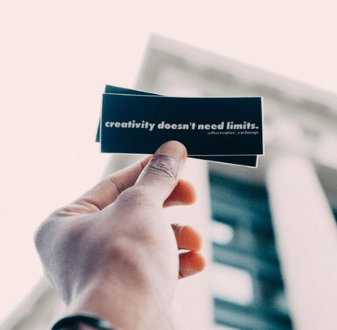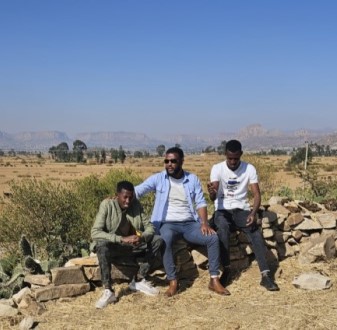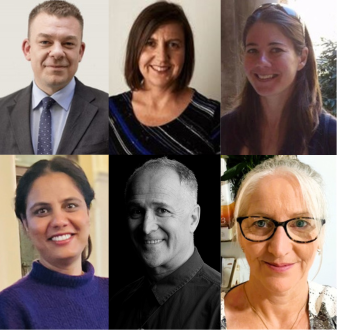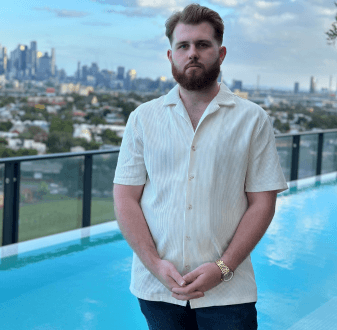Just like a sculptor can unearth a statue of a lion out of a hunk of rock, creativity can help researchers uncover new possibilities. It can trigger curiosity, fire up the imagination and be the catalyst for exploration and original ideas.
So, how can research benefit from creativity and drive innovation?
Designing futures
Scott Thompson-Whiteside is the Executive Dean, Design and Creative Technology at Torrens University Australia and the Dean at Media Design School in New Zealand. He says while the research fields have largely been dominated by science, medicine, and engineering, bringing in creative fields like design to solve enduring challenges can help reframe problems.
Professor Thompson-Whiteside gives the example of designing hospitals or palliative care facilities – places where “there is a great need of sensitivity required.”
“There's a great need to understand the patient's perspective, as well as the doctors, the nurses, the cleaners [and] everybody who works in a hospital or palliative care environment.”
“A set of designed products or interior spaces would try to accommodate those things,” he adds.
According to Professor Thompson-Whiteside, “the essence of design is empathy.” Through the principles of empathy and design thinking, he says we can reimagine all sorts of new futures – starting with the humble supermarket.
“Rather than the current two-dimensional online ordering process, would some prefer a virtual reality experience of walking through a supermarket and picking products into a virtual basket?”
“It's important for companies like Coles and Woolworths to actually explore those scenarios, because in 20 years’ time that might be the expectations of customers,” he theorises.
Games are another creative tool than can help push the frontier of research. But it’s not just about moving pixels on a screen, rather “the potential with which people can do further,” explains Asli Tece Bayrak, Senior Lecturer in the Games Department at the Media Design School.
A brief stint in the Turkish military, where she gained the moniker Tece, made her realise the possibilities that can be achieved through games design. After that, Tece was drawn to the idea of how gamification can revolutionise healthcare.
In the context of rapidly changing health needs worldwide, Tece’s research looks at how merging games technology with rehabilitation therapies can be used in the treatment of Parkinson’s disease.
“I see the current project as an example of a tool that would transform caregiving or rehabilitation in a way.”
Parkinson’s disease is a neurodegenerative condition that affects movement – and some patients can experience significant tremors. Tece’s game design keeps individual needs and differences in mind.
“The whole idea here is somewhat thinking that the game is aware and it's going to respond accordingly. I call this compassionate game design. So, the game knows what to do because it is compassionate and that's the whole idea.”
Doctor VR
Virtual reality (VR) is a place where creativity thrives. It’s a realm in which we can defend our imaginary castles, take a tour of an art gallery on the other side of the world, or follow in the footsteps of explorer Ernest Shackleton across the unforgiving terrain of Antarctica, without fear of frostbite.
According to Senior Learning Facilitator, Fawad Zaidi, VR is also a creative technology that enhances our actual reality. Zaidi’s research looks at the uptake of VR in health sciences to tackle the problem of PPPD or Triple PD – it’s a kind of dizziness which stands for persistent postural perceptual dizziness.
“It's basically a kind of a dizziness that is non-spinning vertigo. This happens if you are standing, or you're sitting, or you're around a complex visual environment,” explains Zaidi.
In the not-too-distant future, with Zaidi’s findings, doctors could be treating patients for dizziness with VR technology. Where Zaidi’s research takes a big leap and offers a better alternative to traditional therapy is through personalisation of treatments.
“If you go to a conventional room, they have a standard set of things for their training. Whether you like it [or] you don't like it, they have it. With virtual reality, we have so much flexibility and we have control on changing the scenes and the environment that suits a particular patient.”
This approach is still in its early stages, but Zaidi’s ultimate aim is to, “develop strategies that becomes a kind of norm for people in health sciences.”
“My research is basically to get more work done on the design strategies. And after that to bring the patients in and to go through the experiments under the supervision of the experts.”
Listen to Research That Matters to hear more about the research of Professor Thompson-Whiteside, Asli Tece Bayrak, and Fawad Zaidi in Episode 7: Creative problem solving.
Research That Matters, is a 9-part podcast series featuring researchers from Torrens University Australia, who are working to solve complex global problems and to propel innovation. Hosted by Clement Paligaru and produced by Written & Recorded.
Find all episodes of Research That Matters at https://www.torrens.edu.au/research/research-that-matters-podcast




